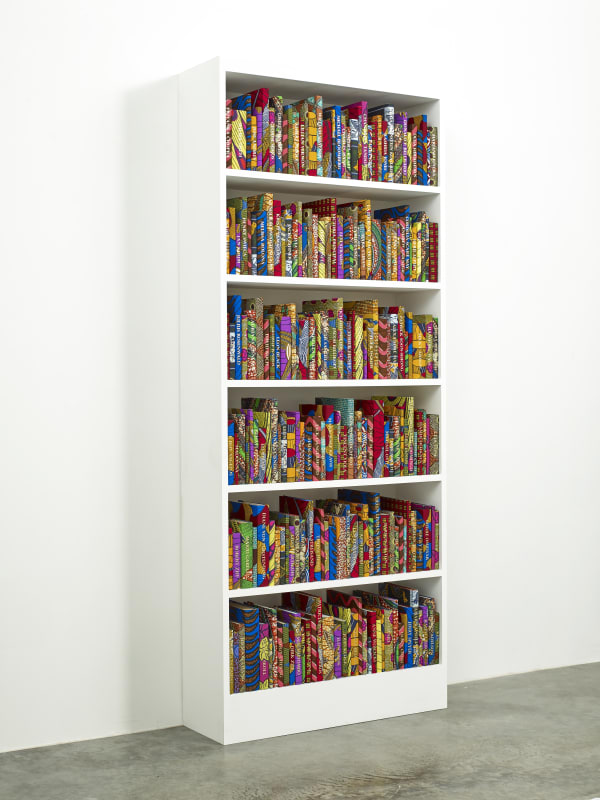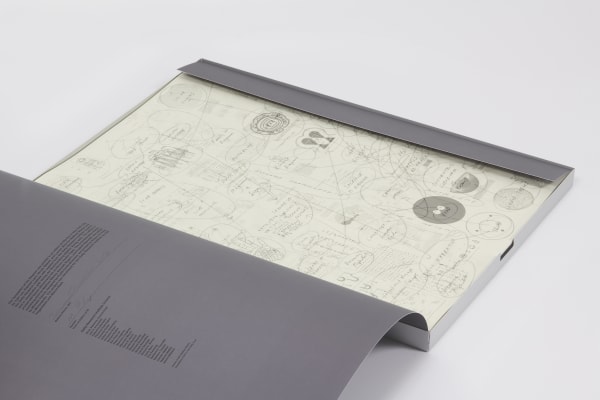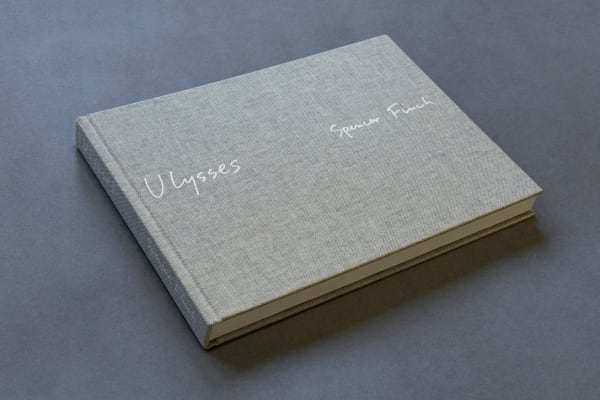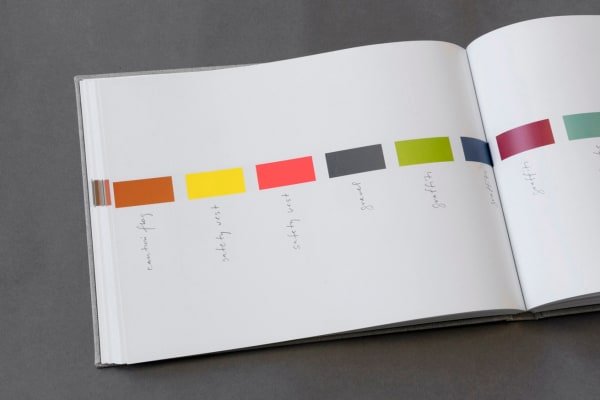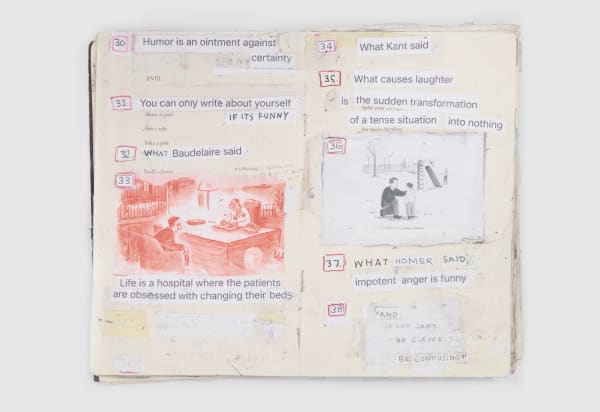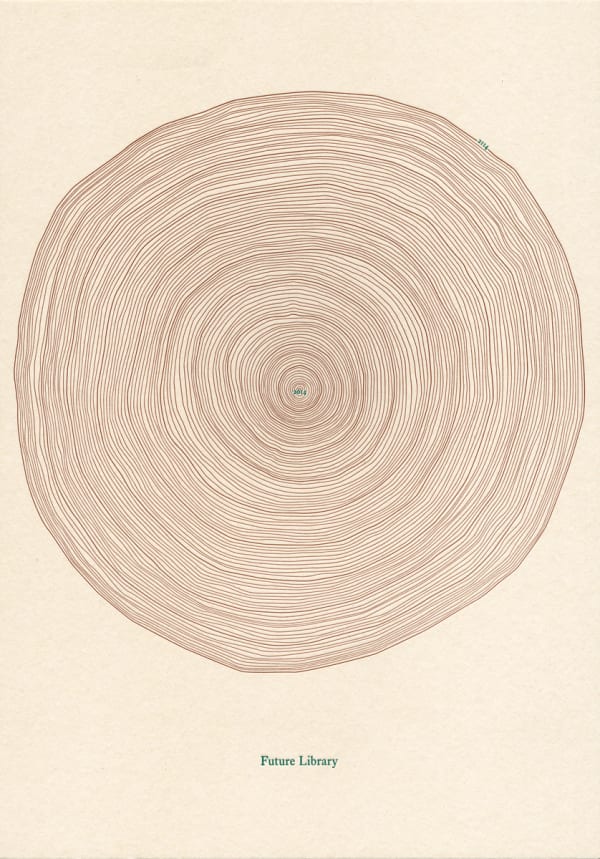-
-
Summer Reading is a collection of works by Firelei Báez, Simon Evans™, Spencer Finch, Yun-Fei Ji, Katie Paterson, Josiah McElheny, Matthew Ritchie, and Yinka Shonibare CBE. Each artist uses the format of the book or the library as a starting point to express their distinct worldview - a strategy for telling stories, organizing knowledge, and preserving collective memory.
For artists like Firelei Báez, visual interventions on printed materials offer a gateway to reimagining dominant historical narratives. Yinka Shonibare CBE and Josiah McElheny utilize the structure of the library as an organizing principle to assess specific areas of knowledge, and examine the dissonance between history and truth. For Yun-Fei Ji, calligraphic inscription provides context and historical depth to the imagery in his ink and watercolor paintings, allowing him to craft metaphor-rich narratives that speak to the social and psychological anxieties of the world today. Matthew Ritchie uses an esoteric form of the book to create an unfolding visual history of the diagram that examines the way that knowledge is communicated. Spencer Finch takes James Joyce's Ulysses as a point of departure, becoming Leopold Bloom for a day's journey through New York City. Simon Evans, who dreamt of being a writer in his youth, uses handwritten text and literary references to catalogue personal experiences in collage, while Katie Paterson contemplates the future of the printed word in her ongoing Future Library project.
Additionally, each artist has offered up their summer reading list for your edification. Happy reading!
-
Firelei Báez
-
In her work, Firelei Báez often paints figuratively onto printed materials such as found maps, manuals, and travelogues, layering bodies over historical documents to imagine new possible modes of understanding inherited stories, in light of geopolitics. Here, Báez depicts a group of huddled, uniformed figures superimposed onto a painted reproduction of a found book’s index title page. The imagery is pulled from photographs of U.N. peacekeepers during ethnic cleansing in Eastern Europe, blended with images of U.N. peacekeepers in Haiti who brought about the cholera epidemic following the Haitian earthquake—drawing a parallel between both parties who, according to the artist, “further destabilized an already tenuous space.”
-
Yinka Shonibare CBE
-
Yinka Shonibare CBE’s The American Library Collection is a series that celebrates the diversity of the American population and acts as an instigator of debate. The work consists of a set of shelves filled with books bound in the artist’s signature brightly colored, Dutch wax printed cotton fabric. Each spine bears the name of a writer, artist, historian, or business leader, some celebrated and some less known, who has shaped the American cultural landscape. Shonibare’s The American Library Collection reflects the significant contributions that people who immigrated to United States have made to their adopted land and asks us to consider what our society would look like without the contributions of immigrants populations.
-

-
Josiah McElheny
-
The formal and conceptual beginnings of this work are found in the vast, hexagonal library described by Jorge Luis Borges in his famous short story The Library of Babel. Borges's story presents the world—or the universe itself—as a library of infinitely diverse types of potential knowledge, contained within a never-ending set of interlocking hexagonal rooms. This organization of space equates knowledge itself with its endless possibility for expansiveness and difference.
From the Library of Cosmic Rays is composed of five hand-blown cylindrical glass elements—scientific, industrial-looking shapes, each topped by an elliptical lens focused at an angle. In the center of each magnifying-glass tube is a mirrored chamber intended to collect the cosmic rays focused towards it by the lens at its top. Viewers look within the frame to a vista of endlessly-refracted hexagonal architecture, implying that each library is in itself vast and just one of many possible libraries.
-

-
-
Map of the Library/Map of the Universe (2020) is an intaglio pochoir print depicting a key of the hexagonal rooms in Borges’ description of the library, with its ventilation shafts and staircases. The work charts the infinite, contradictory structure of the library through an arrangement of color without pattern or order, in a palette inspired by the ideas of Goethe, consisting of red, orange, brown, blue, green, and purple. The selection of placement of colors in each cell differs with each print in each edition.
-
Yun-Fei Ji
-

-
The inscription reads: "According to the elders in Village Wen, many villagers starved to death during the Great Leap Forward. People could hear the ghosts’ cries along the roads around the village even during the daytime. Villagers were afraid of leaving their homes. Then someone said that anyone would be scared of the village secretary—including the ghosts—if you said his name loudly enough. This solution proved effective.
Some people in Village Wen were not willing to immigrate to cities for work. They farmed fish and worked in the fields. There was a big drought in Year Xin Mao. Upstream, there was not enough water for the farming of fish, so the villagers had to pull the fish cages tens of miles downstream. In June, it began raining nonstop and the river’s water level soared. The fish, which the villagers had been cultivating for three years, all suddenly died." - Yun-Fei Ji, translated 2013
-

-
Matthew Ritchie
-
Matthew Ritchie uses an esoteric form of the book to create an unfolding visual history of the diagram that examines the way that knowledge is communicated. 'The Temptation of the Diagram' comprises three elements, a 24 x 306 inch signed accordion print in a signed colophon folder, an artist's book featuring essays by Kenneth Rogers, Frederik Stjernfelt, and Matthew Ritchie, and a laser engraved, anodized aluminum case.
The fully unfolded print is a twenty-five-and a half foot-long paper ‘leporello’, a type of accordion fold named for a character in Mozart’s Don Giovanni.
-

-

-
Matthew's Reading Recommendation
Feeding the Crisis by Maggie Dickinson MORE→
-
Spencer Finch
-
Titled after James Joyce’s acclaimed novel Ulysses, Spencer Finch’s Study for Ulysses (Brooklyn Public Library) chronicles the artist’s visit to the Brooklyn Library, recorded as a series of fleeting color notes. This collage work displays Pantone chips from one portion of a larger installation, Ulysses (September 19), 2014, in which the artist recorded an entire day’s journey around New York City. As he wandered, Finch observed and recorded colors from his environment using the commercial color-matching system Pantone. Taken as a whole, these fragments of the day constitute a chromatic stream of consciousness.
-

-
Related Artist Book
Ulysses by Spencer Finch MORE→
-
SIMON EVANS ™
-
Simon Evans™, the artistic collaboration between Sarah Lannan and Simon Evans, often layers text and found imagery to create encyclopedic works that catalogue both personal and universal experiences, often melding the two together in a single composition with humor and irony.
The Divine Comedy (2016) is a work of 3” x 5” index cards onto which Evans and Lannan have painstakingly copied the entirety of Dante’s 14th-century poem. As a complete object, it is a representation of their joint interest in repetition and meditative practices.
-
At their most raw and uninhibited state, artist's books and embellished diaries are at the core of artistic practice of Simon Evans™. Their new artist book, Comedy Matters, is a cheeky meditation on the nature of comedy. Stitching together personal thoughts with cartoons, found imagery and diagrams, the work is a humorously honest list of what we laugh at and why, and the limits of comedy as a coping mechanism.
-
Katie Paterson
-
A forest
of unread books
growing for a century
The Future Library Project is a 100 year long project, which commenced in 2014 and will continue through the year 2114. Each year, one author from across the globe is invited to write a piece of writing (anything from a poem, short story, to a full length book) which will be held in trust, unread and unpublished until the year 2114. In 2114, one full anthology of all 100 texts by 100 authors will be published. A project that will outlive its founder, and most of the authors and participants, The Future Library project serves somewhat as a time capsule and an optimistic view for the future, where literature and printed books are still printed, read and cherished.
-

-
-
To view the entire reading list, please visit our website HERE→
Summer Reading: Online Viewing Room
Past viewing_room




